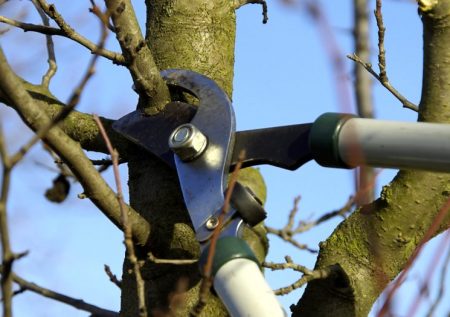
Renovation of a well-kept garden is usually carried out in early spring. In this case, it is extremely important to consider the activation of the movement of juices along branches, so as not to harm the trees. The procedure itself pruning apple trees in the spring has a number of mandatory requirements. First of all, this concerns a clear definition of the goals of the work carried out, as well as the formation of the crown of trees itself. The most suitable period for pruning apple trees is precisely spring at the stage of termination of frosts, since autumn pruning can cause trees to not be able to withstand severe cold and die.
Content
Primary requirements
Initially, you need to carefully inspect the trees and find all the branches affected during the winter. It is on them that new buds will be absent, unlike healthy branches. The shape of the crown is better to choose bushy. In this case, there should be several main (skeletal) branches and additional branches from them. This choice is relevant, due to the ability to increase the stability of the tree itself, and also prevent its possible deformation under the influence of the weight of the fruit. Another important point concerns the convenient process of collecting ripened fruits.
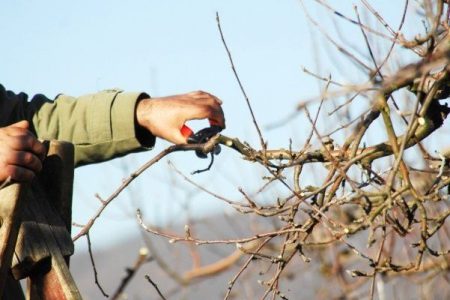
An equally important point concerns the timeliness of the work itself. Pruning should be carried out immediately after the termination of spring frosts. This will make it easier for apples to tolerate stress and more effectively restore the process of preparing for fruiting.
Removal of old, damaged and excess branches should be carried out at an angle from the trunk or skeletal branch. This rule is extremely important for colonized apple trees. The resulting sections must be coated with oil paint or special garden mastic. This trick is aimed at ensuring that the existing juice does not leak out and remains in the main trunk.
Features of work with young and old apple trees
Pruning young and old apple trees has a number of common principles, but at the same time there are several important differences that it is important to know for all gardeners, especially beginners. The list of general rules for caring for apples should include the need:
- pruning the apical shoot, followed by removal of the "crow's feet";
- remove by cutting all intersecting branches;
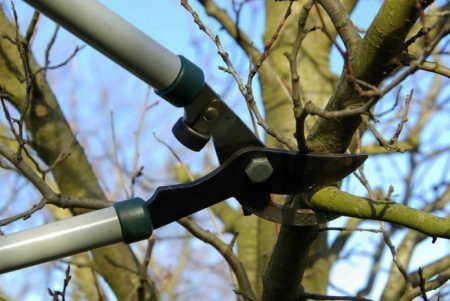
- eliminate at the fork all branches that are directed down;
- trim young shoots that appeared near the trunk itself, as well as branches whose growth is directed to the trunk itself;
- cut all trailing and thickening branches, as well as those that are directed downwards;
- eliminate young growth from the root of the apple trees.
Pruning young apple trees
The first processing of trees is carried out immediately after planting new seedlings at a constant place of growth. It is a question of crown formation. The most suitable option is a sparse crown with several tiers of healthy full branches. The first 3 to 4 years, the procedure must be repeated every spring, but after this pruning of young apple trees is necessary every two years. Experienced gardeners recommend carefully shortening the central stem branch to prevent damage to the crown itself. Large branches on a tree are best left only five or six. In this case, the height of the stem can be about 40 - 50 cm.It is important to remember that timely and careful spring pruning of apple trees allows you to several times increase the yield of healthy fruits.
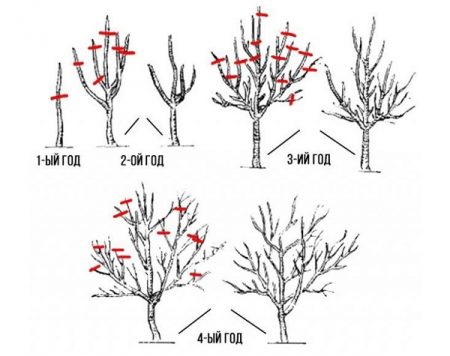
Pruning old apple trees
As a rule, gardeners begin to think about rejuvenating old trees when for several years in a row they cannot get a full-fledged apple crop. Among the most common reasons that the apple tree has withered, it is worth highlighting the presence of numerous extra sprouts that not only inhibit the development of fruiting trees, but also impede sufficient sunlight for the branches themselves. An improperly selected crown shape and the presence of long-dried uncleaned branches also directly affect the ability of an apple tree to please a good harvest of fruits.
The process of pruning old apple trees should begin by cleaning the skeletal branches and the trunk itself from extra shoots that take away the main vitality of the plantings. Thinning of branches is carried out in order to restore full lighting and airing of the main branches. Careful cutting of excess branches (about a third of the total mass) can restore the active fruiting of even the oldest apple trees, which have been growing for more than 20-30 years. For this, the procedure will need to be repeated every spring, 2-3 times in a row. It should be remembered that it is impossible to go too far with this third part of the total volume of branches, since the tree is completely damaged and it remains only to cut it down to the root.
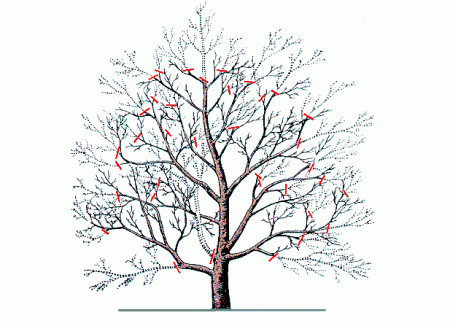
Colon-shaped apple pruning principles
When growing apple trees with a columnar shape during spring work, prune all damaged branches, as well as remove processes that overly thicken the crown. All unnecessary side branches are also subject to cleaning. As a result of the spring work, a tree in the form of a column should remain. The trunk itself cannot be trimmed. It can only be slightly shortened if the apple tree itself has stopped in its growth.
The first few years after planting a seedling, it must be tied to a support. This will allow him not to break and not die. At the beginning of the first full spring after tree planting, shoots are necessarily shortened by two buds (no more). It is in this case that you can grow stronger and denser annual shoots. After another year, all horizontal branches should not be left untouched, but those that grow vertically should be shortened again by two buds. On the existing horizontal branches this year we should expect a crop, and the cut vertical ones will be able to form new healthy shoots. Each subsequent spring, all branches that bear fruit should be cut into a ring.
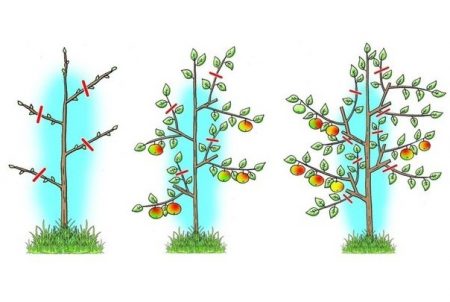
Features pruning dwarf apple trees
Low-growing fruit trees also need careful and always timely pruning. This is especially true of the crown, the correct processing of which affects the scale of the future crop. The crown pruning process must be carried out in such a way that strong healthy branches are located below the weak ones. The buds that are located at the very top of the branches require removal. This will provide an opportunity for better development of the middle kidneys, ensuring the formation of denser and stronger new shoots.
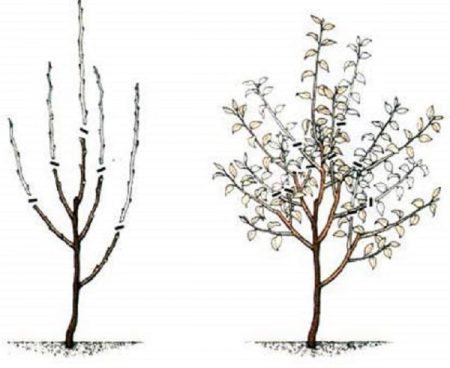
An important feature of stunted apple trees is a strong overload of branches with ripening fruits, which should be collected in a timely manner, and the crown itself should be supported by additional supports.
Instrument Selection Rules
Often among experienced gardeners, you can find recommendations for using a sharp hacksaw when working with dry, sick and simply extra branches on the crown of apple trees. The tool itself can also be replaced with special secateurs or a saw.To cut branches that are difficult to get, a special delimber or a garden knife can be used.

The only mandatory requirement is the sufficient sharpness and cleanliness of the blades used, since the presence of rust or any other substances can provoke damage to the cutting and suppuration places, followed by a pathogenic damage to the whole tree through the juice circulating inside. Immediately after trimming, the place must be isolated, avoiding the loss of juice by the tree itself. In addition to special mastic or oil paint, ordinary children's plasticine is suitable for such purposes. If apple care is carried out for the first time, it is better to entrust all the necessary work to a trusted specialist and carefully monitor all his actions, so that after a year there is an opportunity to repeat it yourself.
Apple tree pruning scheme
In the practice of gardeners, there are a number of mandatory rules for the successful pruning of apple trees. This primarily concerns:
- In the absence of branches, the apple tree itself should be cut at the level of one meter in height from the ground.
- Formed shoots should be completely removed at a height of up to 60 cm from ground level.
- All branches that grow at an acute angle with respect to the trunk are subject to complete removal, since under the influence of ripening fruits they break very easily.
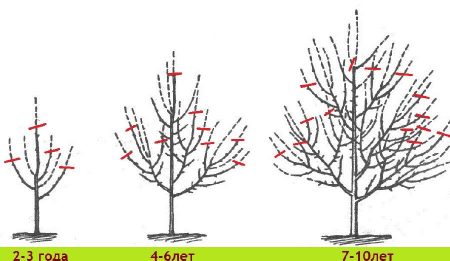
If it is necessary to make a longline form of apple trees, then 3-4 main branches are left in the lower row, there should already be two in the second row.
Making mastic for slices at home
In cases where it is not possible to use a special shop mastic or oil paint for processing slices on apple trees, you can use a product prepared at home. We are talking about a special garden vare, for which you need 500 g of turpentine and rosin, as well as 250 g of linseed oil.
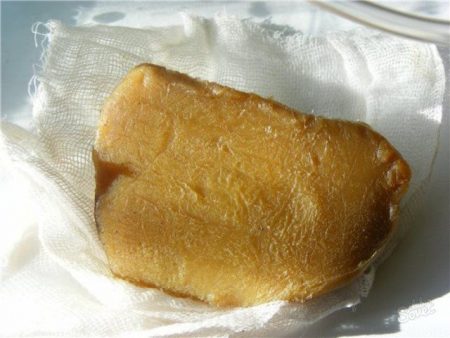
The composition itself will be semi-solid. It needs to be warmed up a little and applied to the tapes, and then tightly wrap all the cuts on the trees.

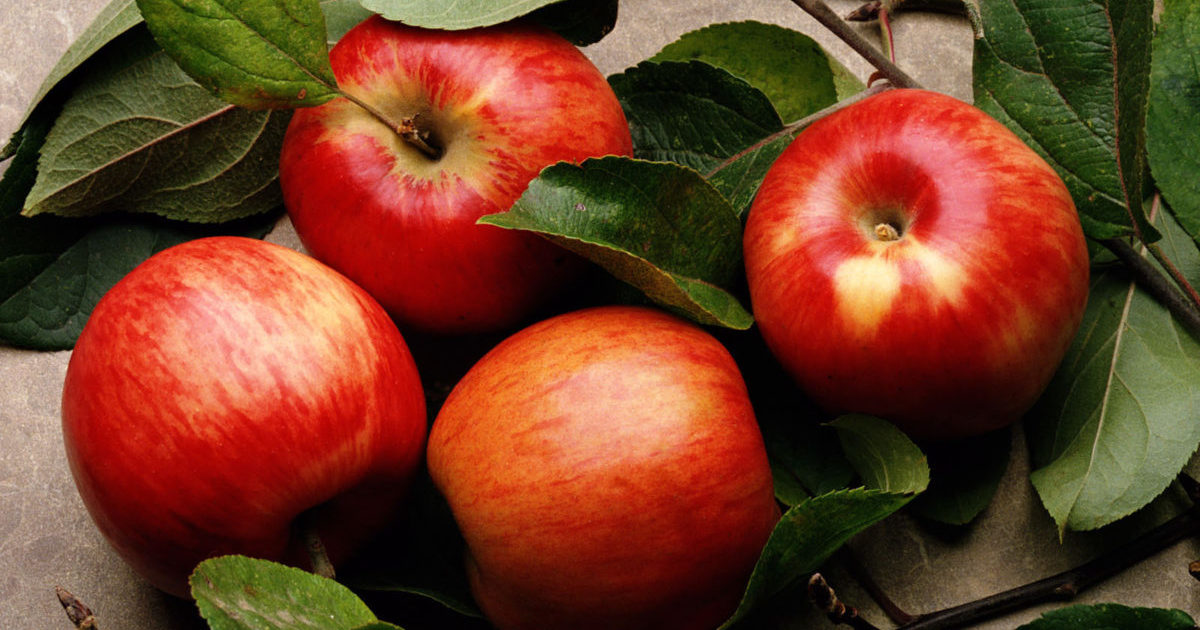
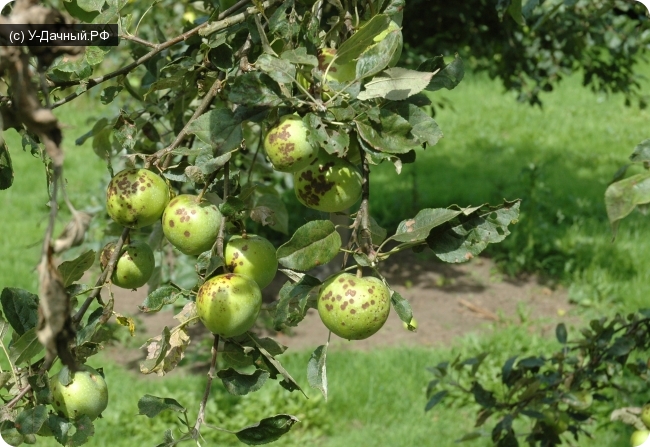
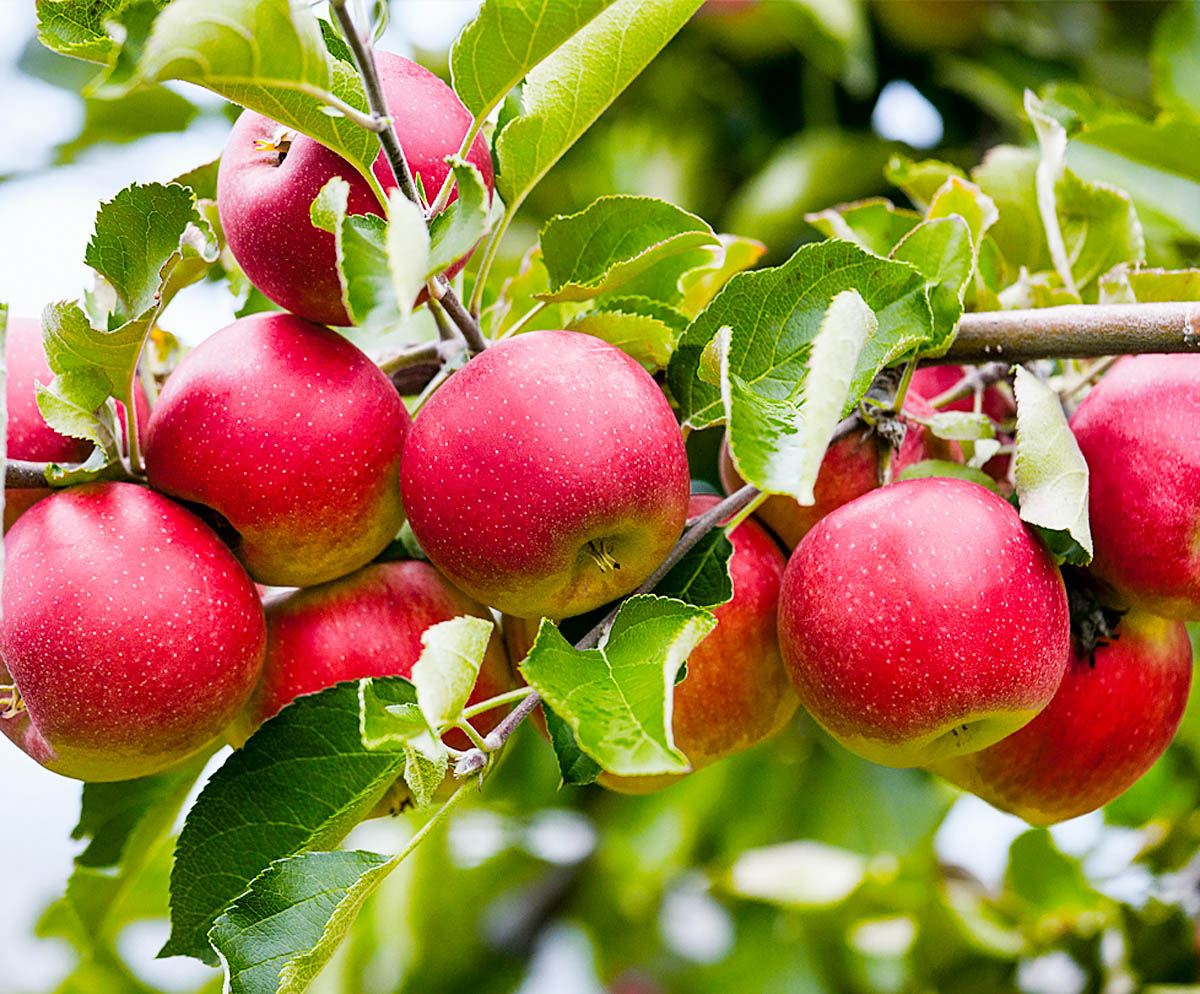
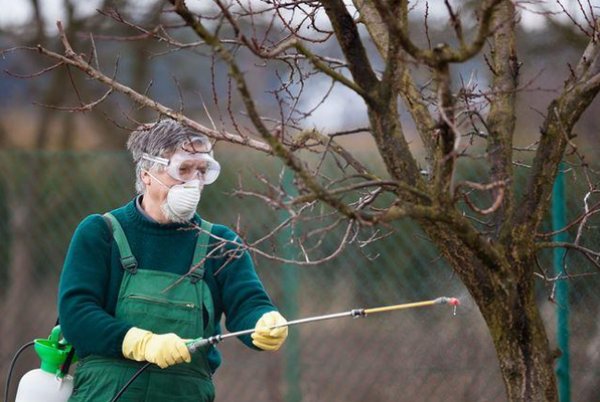 Autumn processing of apple trees from pests and diseases: how to spray, terms
Autumn processing of apple trees from pests and diseases: how to spray, terms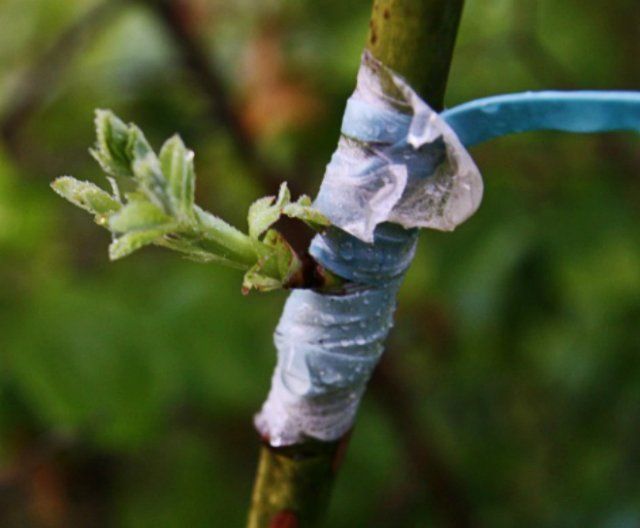 How to plant an apple tree in the fall
How to plant an apple tree in the fall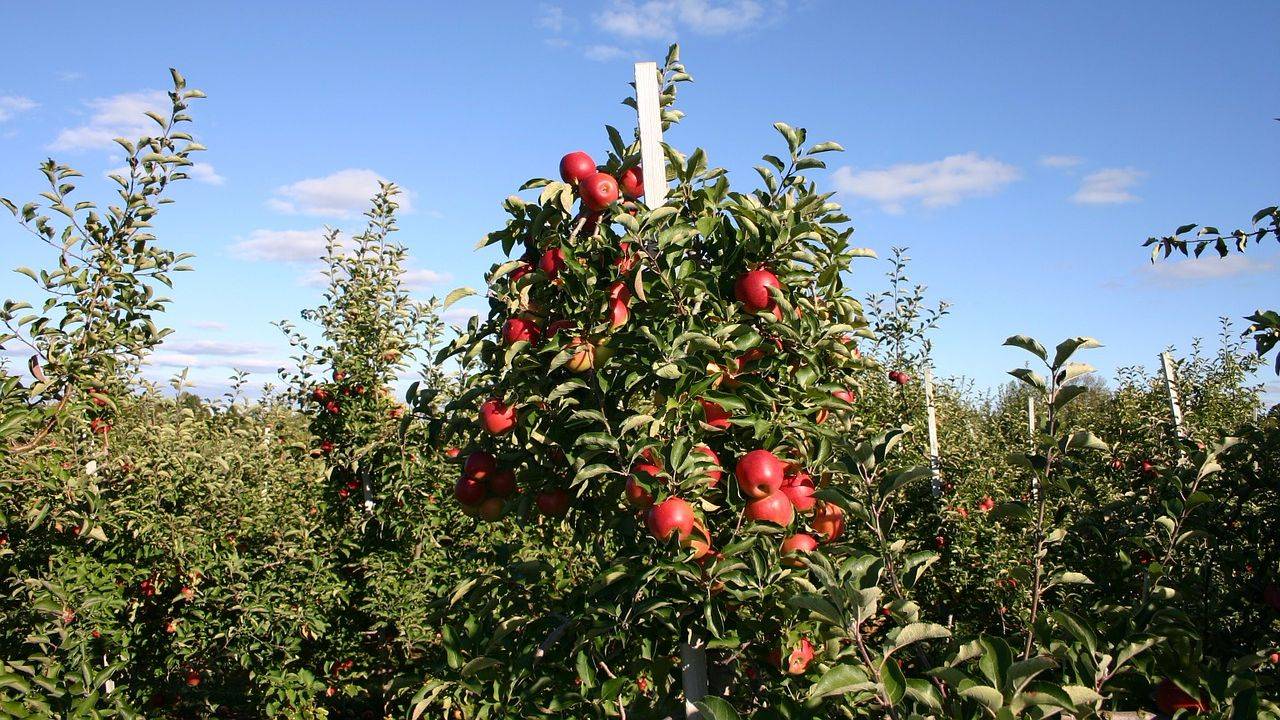 How to prune a columnar apple tree in autumn: features, timing, patterns
How to prune a columnar apple tree in autumn: features, timing, patterns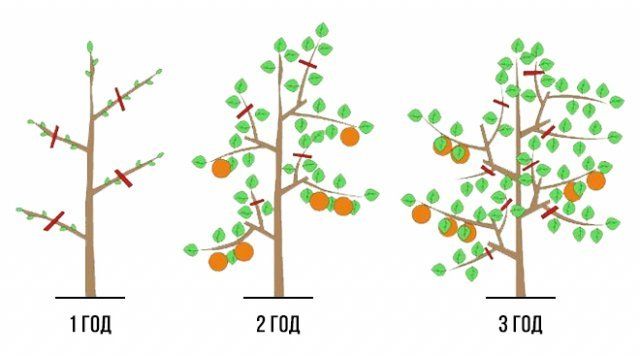 Autumn apple pruning scheme for beginners
Autumn apple pruning scheme for beginners